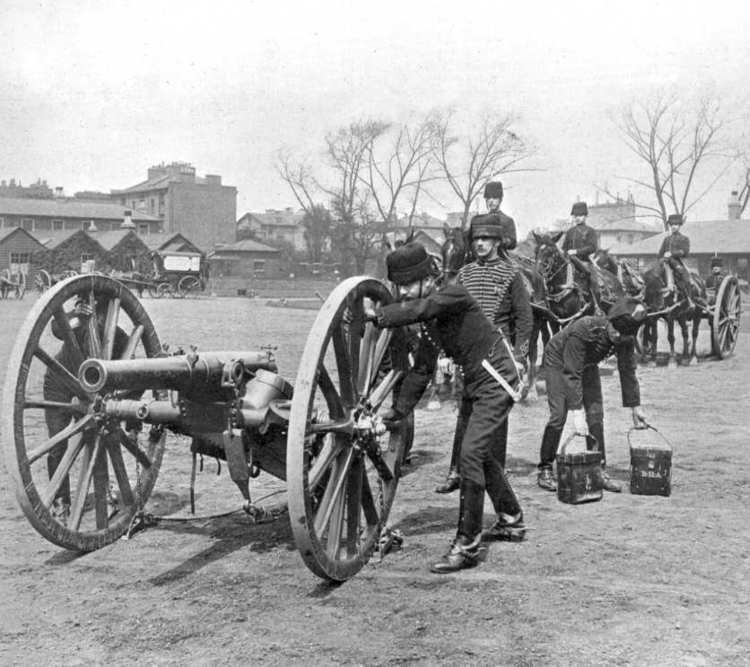Type Light field gun In service 1894–1916 | Place of origin United Kingdom Used by British Empire | |
 | ||
Wars Second Boer War
World War I Weight Mk IV : 656 pounds (298 kg) (barrel & breech),
2,008 pounds (911 kg) (total) | ||
The Ordnance BL 12 pounder 6 cwt was a lighter version of the British 12 pounder 7 cwt gun, used by the Royal Horse Artillery in the late 19th and early 20th centuries.
Contents
History
Problems arose when the standard BL 12 pounder 7 cwt gun was used in the great Indian cavalry manoeuvres of 1891. The carriage was found to be too complicated, and dust caused the metal surfaces of the axle traversing device to seize. It also proved too heavy for horse artillery, which was intended to support cavalry in battle, to manoeuvre.
The 12 pounder 6 cwt gun was therefore developed in 1892, when the new more powerful cordite replaced gunpowder, as a lighter version of the BL 12 pounder 7 cwt gun. It had a barrel 18 inches (460 mm) shorter, on a lighter and simpler carriage, and it entered service in 1894. In 1899 a primitive recoil-absorbing system was added. The weapon was made obsolete in British service by the acquisition of the modern quick-firing Ehrhardt QF 15 pounder in 1901, and was replaced by that and later by the QF 13 pounder from 1905.
The early No. 56 Fuze burned too fast, a maximum of only 13 seconds, and hence could only be time set for a maximum range of 3700 yards. The No. 57 "Blue" Fuze was introduced during the Boer war. It had a slower burning powder train and hence could be time set for ranges up to 5800 yards. A maximum range of 6000 yards was quoted in use in the First World War.
Second Boer War
The gun was used by the Royal Horse Artillery, and together with the BL 15 pounder, it provided the main British firepower. Eighteen guns were also used by the Royal Canadian Artillery in this war. A total of 78 guns fired 36,161 shells.
World War I
A battery of 6 guns served in the East African Campaign as the 8th Field Battery. It arrived with the Calcutta Artillery Volunteers in October 1914, and the guns were towed by teams of oxen.
